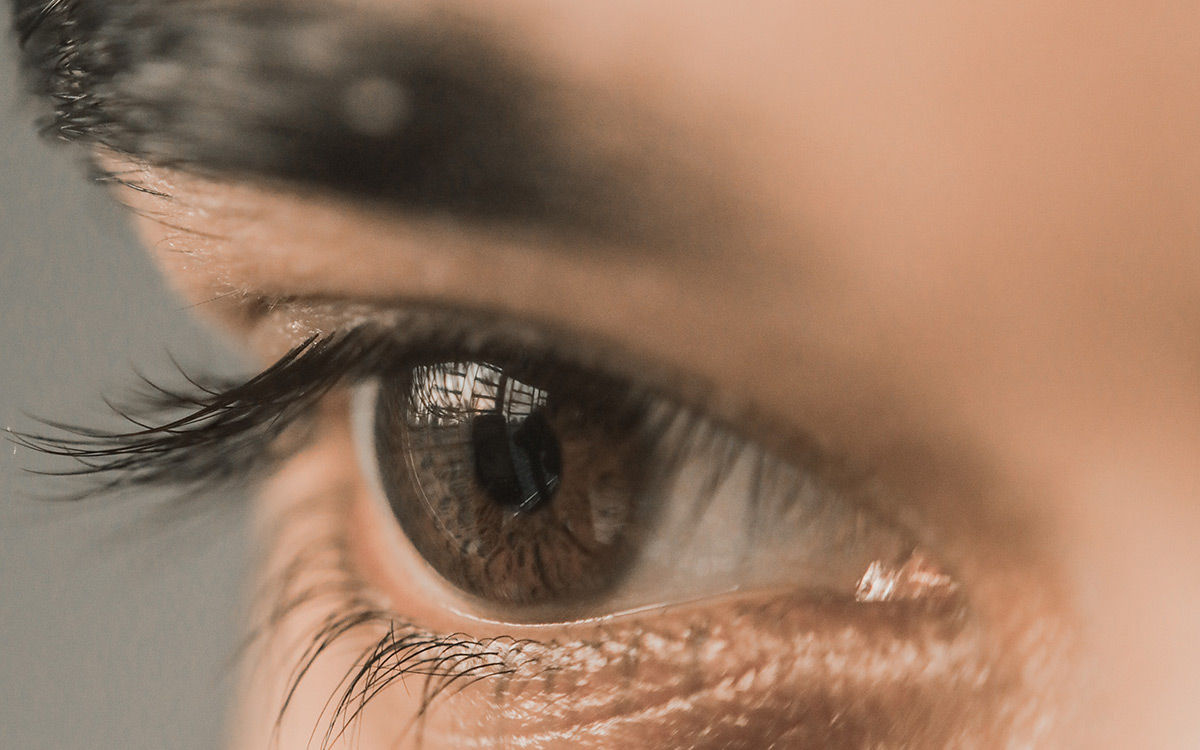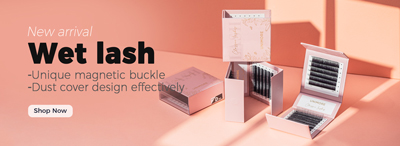The addition of eyelash extensions should not result in an angry red lump but rather in something pleasing to your lash line (hello, fluttery lashes!). However, your chances of acquiring a stye go up every time you touch your eye area, whether you do it yourself or you have someone do it for you.
Your customer will allow you to get your hands on their natural lashes before allowing you to apply for eyelash extensions on them. The question remains, can eyelash extensions bring on a stye?
When performed in unsanitary conditions, eyelash extensions have the potential to introduce germs to the eye area, which could result in the formation of a stye. However, getting eyelash extensions on their own does not significantly raise the likelihood of getting a stye. When proper cleanliness is observed, the application of eyelash extensions does not result in the formation of styes.
I can understand why some of your customers would be concerned that they will leave the salon with an unsightly growth developing underneath their gorgeous lashes. But don't worry about it. After having their eyelash extensions done in a professional salon that places a high priority on maintaining a clean environment, they are at a significantly reduced risk of developing a stye.
I will tell you all you need to know about the link between eyelash extensions and styles, as well as how to protect yourself from developing this eye ailment before, during, and after your treatment.
Let's go!
- 1 What Exactly Is A Stye?
- 2 Types Of Styes
- 3 Can Eyelash Extensions Give You Style
- 4 Does Anyone Have A High Risk Of Getting Styes?
- 5 How to Avoid Getting a Stye From Eyelash Extensions
- 6 How Can I Treat Stye?
- 7 Is It Possible For Me To Get lash extensions If I Have A Style?
- 8 What To Do If You Get A Stye After Getting Your Eyelashes Extension Done
What Exactly Is A Stye?
An inflammation of the eyelid that is accompanied by a little accumulation of pus is referred to as a stye. In the majority of cases, the infection is brought on by bacteria called staphylococcus.
An infection of the sebaceous gland can cause a stye. It is sometimes referred to as a hordeolum and can be spelled with the letter "sty." Inflammation is typically brought on by an infection caused by germs.
Styes tend to clear up within a week's time in the vast majority of cases. On the other hand, some people could encounter symptoms that don't get better and need more treatment.
A few quick points about styes
The following are some important details regarding styles. The main article contains a greater amount of detail as well as supporting information.
Styes can be excruciatingly painful, yet they typically clear up without the need for medical attention.
A person should seek medical assistance if a stye lasts more than a week or if it causes problems with their vision.
Both exterior and internal styes are possible.
Some people find that applying a warm compress and taking over-the-counter pain medication helps relieve the discomfort caused by styes.
Types Of Styes
The majority of styles develop on the surface of the eyelid, and they may become yellow or discharge pus. The pain caused by an interior style is typically worse than that caused by one that develops on the surface of the eyelid.
The following are the two main classifications of styles:
External Hordeolum
Styes on the outside of the eyelid appear along the margin of the lid itself. They have the potential to turn yellow, get filled with pus, and be extremely painful to the touch.
Styes on the skin's surface can be caused by infections in the following locations:
The tiny openings in the skin, known as follicles, are responsible for the growth of eyelashes.
This gland, which is linked to the eyelash follicle and produces oil, is known as the sebaceous gland. Sebum acts as a lubricant for the eyelash, preventing it from drying up and becoming brittle.
The apocrine gland is another gland that has a role in preventing dryness of the eyelashes. It is a sweat gland that drains into the follicle that contains the eyelashes.
Internal Hordeolum
The eyelid itself is where the swelling begins to form. In most cases, a hordeolum that is located internally causes more discomfort than one that is located outside. Internal styes are another name for these conditions, and the majority of the time, they are brought on by an infection in the gland that is responsible for producing meibomian oil. These glands exude a substance that is a component of the film that protects the eye, and it is produced by a secretion.
In addition, patients may have a burning sensation in the eye, itching on the eyeball, sensitivity to light, tearing, a sense that an object is in the eye, and discomfort while blinking. Patients may also experience discomfort when blinking.
Can Eyelash Extensions Give You Style
Let me begin by putting one misconception to rest: using lash extensions will not result in styles. Styes are caused by bacteria.
When germs are in close proximity to your eyes, they have a greater chance of being lodged in an oil gland or lash follicle (a lash follicle is a gland that produces eyelashes and is located on the eyelid) (an oil-making factory). In this case, the bacteria cause an infection, which results in a bump that resembles a zit, as well as other symptoms of a stye, including the following:
- A swollen, painful, or red eyelid
- Discomfort
- sensitivity to the light
- A grittiness in the sensation of the eye
- A crusty appearance around the periphery of the eyelid
Your client is at risk for getting a stye if bacteria are able to get to their eyelid in any way, regardless of whether or not they have had eyelash extensions done.
You must be curious about the connection between eyelash extensions and styles, don't you?
Your patients have an increased risk of having a stye if their operation is performed by a person who believes that maintaining proper cleanliness is a waste of time. Here's how the connection works:
Imagine that the individual who is giving you lash extensions uses instruments that are contaminated with bacteria or utilizes supplies that have expired. It is possible for the germs to spread to the person's eyelid.
What if they do not wash their hands before touching the lashes of your customers, for example? It's possible for bacteria to get on their eyelids.
Staphylococcus, a type of bacteria, can live innocuously on your skin and in your nose, but if it makes its way to your eyes, it can cause styes. This can happen, for example, if you rub your eyes after wiping your nose and then touch your eyes.

Does Anyone Have A High Risk Of Getting Styes?
Styes are quite common and can develop in virtually anyone.
If you frequently rub your eyes or don't properly care for your contact lenses, you significantly increase your risk of developing a stye (like keeping them clean, replacing them when they expire, not sleeping in them, and washing your hands before inserting and removing them.)
Other things, such as sleeping in your makeup, using cosmetics that have expired, having a skin condition such as rosacea, having a medical condition such as diabetes, and having chronic eyelid inflammation, all contribute to an increased risk of styes (blepharitis). Your risk may also be increased if stress prevents you from getting enough sleep, decreases your immunity, or prevents you from taking proper care of yourself.
The bad news is that if you've ever had a stye before, you're more likely to have another one in the future.
How to Avoid Getting a Stye From Eyelash Extensions
Your customers' chances of developing a stye as a result of receiving eyelash extensions will be reduced if they have the operation performed by a trained and qualified lash professional.
Sanitation and hygiene management are fundamental components of any worthwhile lash extension training program. Therefore, any properly qualified, experienced, and trustworthy lash technician is aware of how to properly clean their workstation, tools, supplies, and hands in order to avoid contaminating their client with harmful microorganisms.
Before scheduling an appointment, your clients should always check out the salon for themselves and inquire about its standards of sanitation.
After getting lash extensions, your customers will need to do something to keep styles at bay, and that something is practicing proper eye hygiene.
Following these three simple guidelines will help you avoid getting styes in your eyes.
Rule 1: Always Wash The Area Around Your Eyes.
Before cleansing the region around their eyes, your client should always wait 24 hours following their lash extension procedure (to allow the results to be properly set) before doing so. Every. Single. Day.
Moisten a cotton pad with a gentle cleanser that does not include any oil, such as lash shampoo, oil-free micellar water, or baby shampoo that has been diluted, and then wipe the pad over the person's closed lid, eyebrow, and lashes from the base to the tip.
Washing your face once a day can prevent dead skin cells, grime, and makeup from accumulating on your lash line. This will reduce the likelihood that bacteria will become trapped in an oil gland or follicle and cause a stye to form.
Rule 2: Always Wash Your Hands Before Touching Your Eyes.
Your customer should always make sure that their hands are clean before touching their eyes, so advise them to do so. Even better, instruct children to keep their hands away from their eyes whenever they can. They will significantly reduce their danger of getting a stye and the likelihood that they will ruin their lash extensions if they keep their hands off of their lashes.
Rule 3: Avoid Using Eye Makeup That Has Expired.
Makeup that has expired has a greater risk of becoming contaminated with bacteria; therefore, advise your customers to avoid getting expired mascara, eyeliner, and eyeshadow in their eyes.
A healthy immune system is the best defense against the harm that bacteria can do. Enhance yours by consuming a diet rich in fruits and vegetables, engaging in regular physical activity, getting enough amount of sleep, laughing frequently, and breathing deeply.
How Can I Treat Stye?
The vast majority of times, styes clear up on their own without needing any kind of medical attention. If the stye is especially painful, though, pain medicines might be helpful in treating the discomfort. Before the stye has entirely cleared up, it is advisable to refrain from wearing contact lenses, applying eye makeup, or using lotions.
We recommend the following home cures and treatments for styes:
Warm Compress
We strongly advise our customers not to try to pop a stye on their own, although they are free to use a warm compress.
A warm compress that is pressed against the eye in a gentle manner may help alleviate symptoms and allow pus to drain more easily. The temperature of the water shouldn't be too high. When applying the compress to another person, one should take extra precautions to ensure that it does not get too hot and does not exert an excessive amount of pressure.
Your customers should apply pressure to the eye area with the compress for ten to twenty minutes, three to four times per day.
As soon as a style breaks open, patients typically experience a rapid improvement in their symptoms. The application of the compress not only alleviates the pain but also has the potential to stimulate the drainage of the pus.

Antibiotics
If the style continues to be a problem, the doctor may recommend an antibiotic eye drop treatment or a topical antibiotic ointment. Antibiotics to be taken by mouth may be recommended by a physician in the event that the infection goes beyond the eyelid.
Alternative Treatments
When an external stye is particularly painful, the doctor may remove the eyelash that is located closest to it and then lance it with a small needle in order to drain the pus and remove it. It is strongly recommended that only a trained expert carry out this surgery. In the event that the individual's condition does not improve, a general practitioner can suggest that they see a specialist, such as an ophthalmologist.
Is It Possible For Me To Get lash extensions If I Have A Style?
Never in a million years. If you currently have a stye, you should wait until the infection has cleared up before getting lash extensions or any other treatment done to your eyelashes. This applies to any eyelash treatment.
It is extremely risky to get a lash treatment if you already have an infection, so as a responsible and competent lash artist, you should always advise your customers to hold off on getting their treatment until the illness clears up.
What To Do If You Get A Stye After Getting Your Eyelashes Extension Done
Imagine that despite your best efforts, you continue to suffer from styes. Oh no!
The good news is that they are quite simple to cure, and in some cases, they can even go away on their own within a few days.
If your stye does not go away, you can try to get rid of it using the following strategies:
A warm compress, such as a clean facecloth that has been soaked in warm water, should be held against your closed eye for approximately ten minutes on multiple occasions during the day.
Daily, use a gentle cleanser to clean your eyes.
The style should be treated with a saline solution.
If your stye does not appear to be improving after a few days, if it drains a lot of blood, if your lid is highly swollen, if the redness and swelling extend across your eye, or if your eyesight changes, you should book an appointment with your doctor.
Conclusion
Styes, despite the fact that they are painful and extremely prevalent, are typically not something to be concerned about. Styes can result in a number of consequences, such as the formation of a cyst around the infected area or the spread of the infection to other areas of the body. Nevertheless, medical professionals are able to handle either of the unusual consequences that can take place.
The likelihood of getting a stye can also be increased by a number of other variables, such as an inadequate amount of sleep or the use of particular cosmetics.
Hygiene, not eyelash extension, is the most important factor to determine whether or not you will get a stye. Insufficiently clean lash technicians provide a risk of transmitting bacteria to their customers' eyelids, which in turn raises those customers' risk of developing a stye. However, professional lash technicians who have strong hygiene standards will not give their customers a style while they are doing their lash extensions because it is against their professional code of conduct.
Keeping bacteria away from your eyes is the most effective technique to stop a stye from developing. Therefore, ensure that your customers always have their lash extensions performed by a lash tech who places a high priority on cleanliness. In addition, you should recommend to your customers that they initiate and immediately maintain good eye hygiene practices, regardless of whether or not they have lash extensions.







